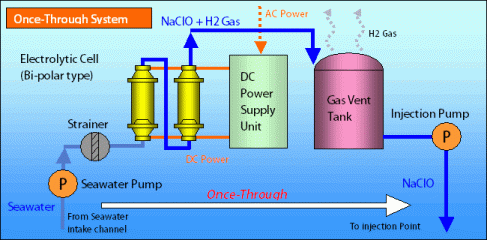By: Rachel Schmidt
Who am I?
Helllllllo Team! I’m so excited to be writing a guest blog for H2dayO! My name is Rachel Schmidt, and I know Ariel from our civil engineering days at good ole UVa (University of Virginia)! We took many classes together and spent a summer working with families and slow sand water filtration units in La Gracia, Belize. I have yet to meet Monique – but hopefully somewhere down the line!
South Africa
So let’s get to the good stuff… I’ve recently returned from a 9-month Fulbright Grant in rural South Africa. I was working to further develop and establish a Ceramic Water Filter (CWF) Factory. The two big-picture goals include: 1) Get clean water into the community (along with awareness and sanitation education to help prevent disease), and 2) Revive a local business so the workers can produce a profit to support their families.
The Team
I worked with a large UVa-based team, led by Professor Jim Smith, as well as a sizeable University of Venda team, located in Limpopo Province, South Africa. The multidisciplinary teams include students and staff from anthropology, architecture, biology, business, engineering, and nursing, among others. We worked closely with a Limpopo-based women’s organization known as the Mukondeni Pottery Cooperative. Together, these teams make up our newly founded organization, PureMadi – check it out here: puremadi.org… Pure is for purifying water, and Madi means water in the local Venda language, Tshivenda!
Mukondeni Pottery
The Mukondeni Pottery Cooperative began over 25 years ago with a group of women coming together to teach ceramic skills and develop a small business. Today, Mukondeni has grown to include 40+ women, a large building to work in, and an expansive outdoor display area (see Figures 1 and 2). Due to poorly maintained roads and increased competition in the area, Mukondeni is finding it difficult to sell enough pottery to make a profit. The ladies’ knowledge of ceramic artistry, current financial outlook, willingness to try new technologies, past relationship with the University of Venda, and local survey data resulted in the Universities approaching them to join into a mutually beneficial relationship.
Ceramic Water Filter Technology
Ceramic water filters originated in 1980, and were streamlined in the 1990s to be uniform in size (think flower pot shaped) and capability. Laboratory and field-testing of CWFs has determined they are highly effective in reducing waterborne pathogens and disinfecting harmful bacteria.
Materials included for CWF production:
a) Clay – found and mined locally
b) Water – provided by on-site borehole
c) Sawdust – provided for free by local lumber mills
d) Silver nanoparticles – provided by UVa team
Process to create CWFs:
1) Dry clay and use electric hammer mill to grind clay into a fine dust
2) Dry sawdust and sieve down to desired size
3) Add fixed ratio of clay and sawdust into electric mixer, then add water
4) Use hydraulic press to mold filters into uniform shape (see Figure 3)
5) Allow filters to dry, and fix imperfections and rims
6) Fire in wood-burning (or electric!) kiln – this allows the sawdust inside the filters to combust, leaving small pores in the media to allow water to filter through – thus handling the physical decontamination
7) Perform the pressure test (make sure there are no cracks), and the flow rate test (to ensure water spends enough time in the media to be effectively filtered, but isn’t too slow to prevent usability!) for quality assurance (see Figure 4)
8) Dilute silver solution, and paint onto each filter – this takes care of the chemical disinfection of the filtration process (see Figure 5)
9) Prepare bucket by rinsing it out, drilling and inserting plastic spigot, and slapping on a sticker
10) Place filter in the bucket, snap on the lid, and you’ve got yourself a ceramic water filter
Challenges
I reached a few major challenges…
1) Language: Tshivenda is a difficult language to learn, as it doesn’t translate well and includes noises I have never made before. A few of the women spoke English, so we all gained patience and understanding while learning to connect and communicate effectively.
2) Culture: Communication was not only difficult due to the language barrier, but to the cultural differences as well. On multiple occasions, I encountered vastly diverse cultural expectations, which often to led to severe misunderstandings. These differences were difficult to cope with, until I recognized the situation and could work harder to stay transparent and keep folks updated.
3) Roof: The roof of the open-air factory blew off during a huge storm! Luckily, no one was at the site or harmed, but it put a one-month delay on filter production.
4) Press: Two of the three filter molds dented during pressing, which left us with a multi-week delay to get them re-fitted and filled with concrete.
5) Kiln: The wood-burning kiln was very difficult to work with, and rarely reached 900C, resulting in unacceptable filters. WOMP. I was not able to master the balance of stoking, airflow changes, timing, or teach the concept well enough. We ended up re-furbishing an old electric kiln that had been on site since the 90’s.
Wrapping Up…
All in all, my work in South Africa focused on structuring and perfecting the filter-creation process, ensuring that the women could produce filters independently, and helping them get their business off the ground. I worked with the Cooperative Manager to engage additional stakeholders, initiate a marketing program, distribute our first batch of filters, and provide trainings for all of the women. The Universities and I remain committed to Mukondeni for the long haul, even once we have reached an acceptable level of independent sustainability.
There you have it…. the super basics of starting and maintaining a ceramic water filter factory! It was a wonderful experience in which I formed amazing friendships with these women, learned the technical nitty-gritty of CWFs, practically started a small business, and experienced living abroad!

